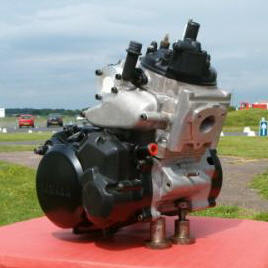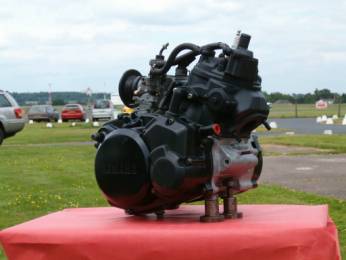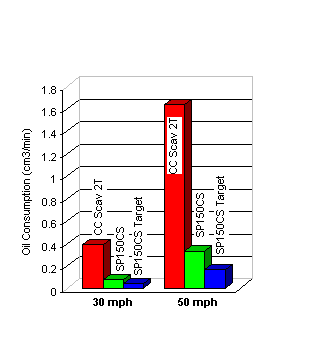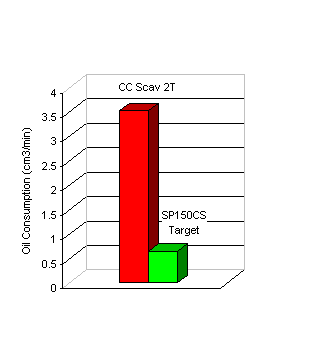

The primary objective of this project has involved a demonstration of the low oil consumption characteristics of the stepped piston engine. The support enabled the design and build of a single cylinder 150 cm3 SP engine and this is shown above as a modification to an existing motorcycle crankcase and gearbox assembly. The original 125 cm3 crankcase scavenged "base" engine can be seen below.

Results from the project are very encouraging even at this early stage of development. Many conventional crankcase scavenged engines operate at an equivalent fuel:oil ratio of 50:1 at full throttle. Operation below this level often causes catastrophic engine failure. The stepped piston engine operates on neat fuel with lubricant supplied from the sump as per four stroke engine practise. If we consider the total fuel consumption as a ratio against the total measured oil consumption then data for comparison with conventional crankcase scavenged two stroke engines can be generated. The stepped piston engine has so far been demonstrated to run at levels approaching 200:1 at full load or in other words a 75% reduction in oil consumption against typical precision oil feed pump metered two stroke engines. The following bar charts show some of the results from the motorcycle engine project.

The results above were recorded for top gear Road Load conditions. Data is presented at simulated 30mph (48km/h) and 50mph (80 km/h) riding conditions. The chart below shows a comparison of our target oil consumption at full load 7500 RPM operating conditions against the measured consumption of the precision metered conventional engine.

The G8 Portable Fire Pump engine achieved an oil consumption level approaching an equivalent of 200:1 during independent 200 hour full load endurance testing. Further information on this engine can be seen on the Industrial/Marine Engines page of this Website.
© BERNARD HOOPER ENGINEERING LTD